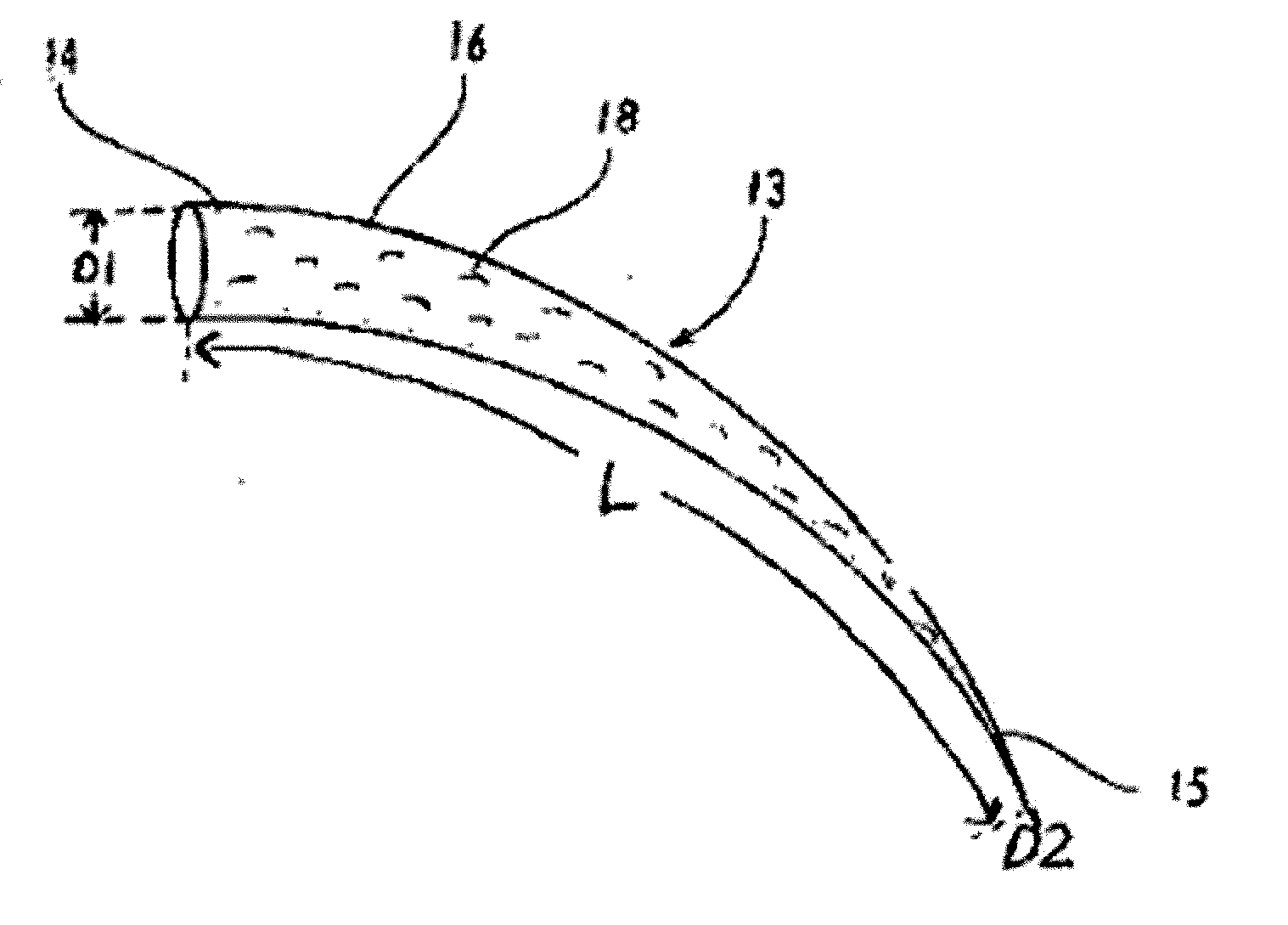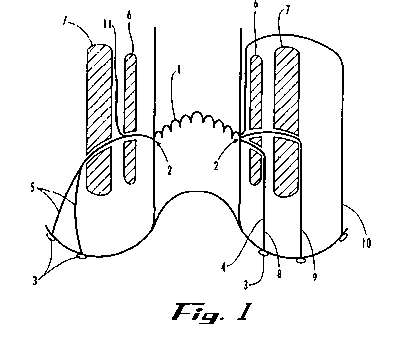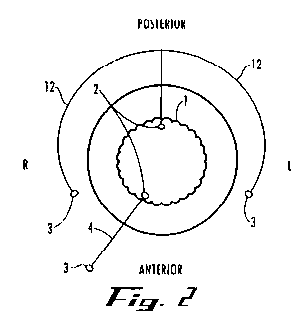Implantable graft to close a fistula
a technology of implantable grafts and fistulae, which is applied in the field of implantable grafts to close fistulae, can solve the problems of complex pathology, impaired sphincter control or even incontinence, and inability to achieve very good results, and achieves the effects of promoting tissue reconstruction, and reducing the risk of infection
- Summary
- Abstract
- Description
- Claims
- Application Information
AI Technical Summary
Benefits of technology
Problems solved by technology
Method used
Image
Examples
Embodiment Construction
RELATED APPLICATIONS
[0001] The present patent document claims the benefit of the filing date under 35 U.S.C. §119(e) of Provisional U.S. Patent Application Serial No. 60 / 538,365, filed January 21, 2004, which is hereby incorporated by reference.
FIELD OF THE INVENTION
[0002] A graft for occluding a fistula is provided. The graft may be pulled, tail first, into the fistula to completely occlude the fistula, thereby avoiding a surgical fistulotomy and its attendant complications.
BACKGROUND OF THE INVENTION
[0003] Fistulae occur commonly in man. Such fistulae may be congenital or may be caused by infection, inflammatory bowel disease (Crohn’s disease), irradiation, trauma, childbirth, or surgery, for example.
[0004] Some fistulae occur between the vagina and the bladder (vesico-vaginal fistulae) or between the vagina and the urethra (urethro-vaginal fistulae). These fistulae may be caused by trauma during childbirth. Traditional surgery for these types of fistulae is complex and not ve...
PUM
 Login to View More
Login to View More Abstract
Description
Claims
Application Information
 Login to View More
Login to View More - R&D
- Intellectual Property
- Life Sciences
- Materials
- Tech Scout
- Unparalleled Data Quality
- Higher Quality Content
- 60% Fewer Hallucinations
Browse by: Latest US Patents, China's latest patents, Technical Efficacy Thesaurus, Application Domain, Technology Topic, Popular Technical Reports.
© 2025 PatSnap. All rights reserved.Legal|Privacy policy|Modern Slavery Act Transparency Statement|Sitemap|About US| Contact US: help@patsnap.com



